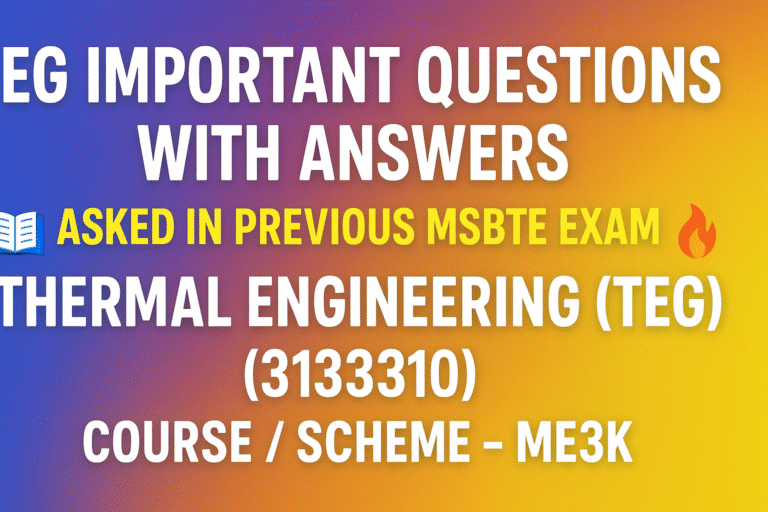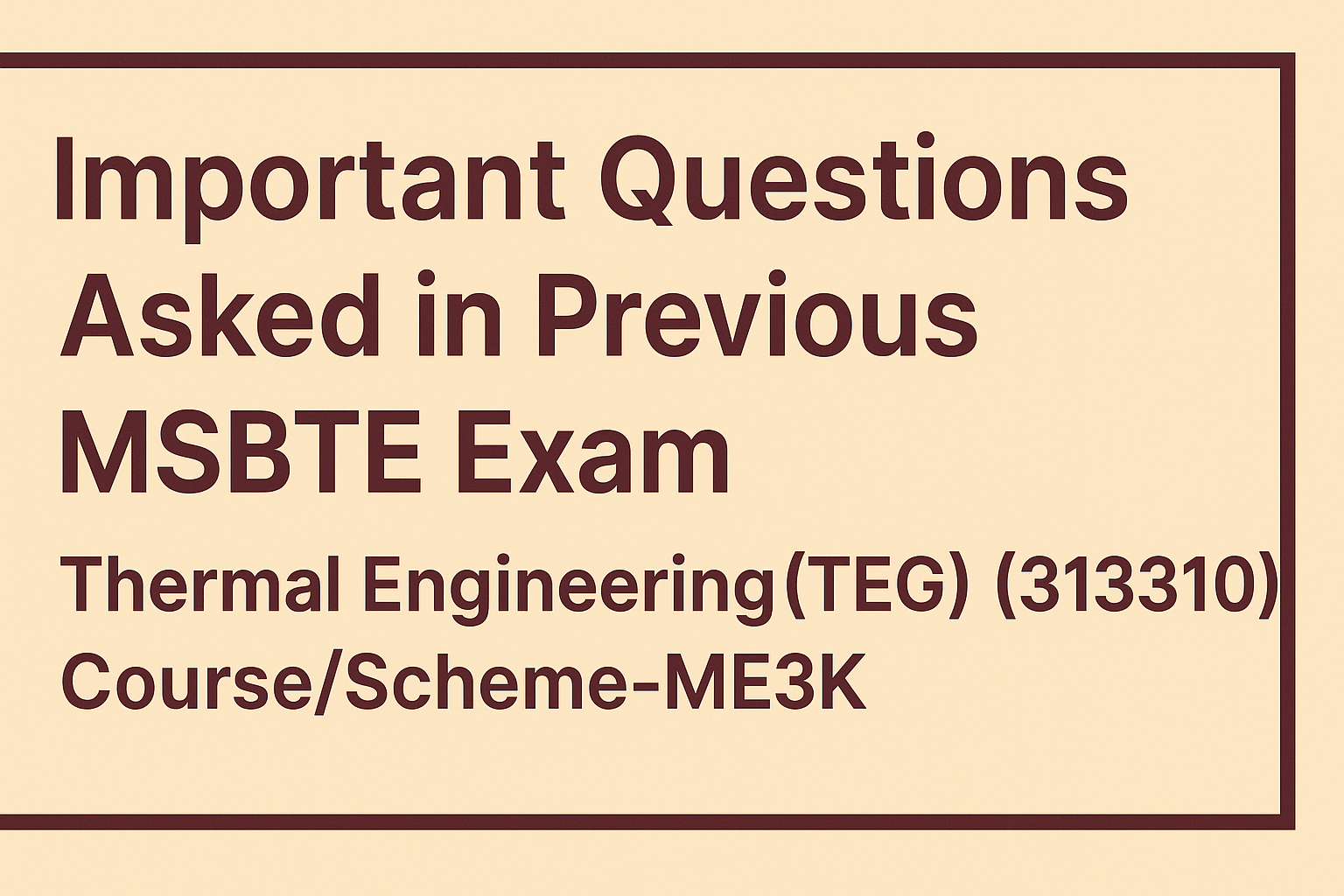Metrology and Measurement (MAM) (313316) ME-4K Notes
Since they frequently encounter measuring various properties of machined components and the proper fitment of interchangeable components in assemblies, the diploma mechanical engineer should be able to comprehend, use, and choose a variety of measuring instruments. Additionally, students must to understand the fundamentals of
transducers, equipment, and the measurement of non-electrical factors such as sound and force.
Unit – I Overview of Metrology and Linear Measurement
1.1 Definition of Metrology, objective and types of
Metrology, Need of inspection, Methods of measurements.
1.2 Characteristics of instruments – Static characteristics:
Least count (resolution), Range and Span, Accuracy and
Precision, Reliability, Calibration, Hysteresis, Dead Zone,
Drift, Sensitivity, Threshold, Repeatability, Reproducibility,
Linearity, Amplification, Magnification. Dynamic
characteristics: Speed of response, Fidelity, Overshoot.
1.3 Standards: Definition and characteristics of Line
standard, End standard and Wavelength standard.
1.4 Linear measuring Instruments: Working principle of
Vernier caliper, micrometer, height gauge and depth gauge.
1.5 Types of Errors and its sources in Measurements, Factors
affecting on accuracy.
1.6 Selection of instrument, Precautions while using an
instrument for getting higher precision and accuracy.
Unit – II Gauges and Comparators
2.1 Comparators: Definition, Requirement of a good
comparator, Classification, Use of comparators, Working
principle (Merits and Demerits) of Dial indicator and
Pneumatic Comparator (Air Gauge), Selective Assembly,
Interchangeability.
2.2 Gauges: Limit gauges. Taylor’s principle of Gauge
design, Plug, Ring Gauges, Snap gauges.
2.3 Slip gauges: Wringing of Slip Gauges (Numerical).
Precautions
Unit – III Angular, Screw Thread, Gear and Surface
Finish Measurements
3.1 Angle measurement: Instruments used in Angular
Measurements: Angle Gauges (No Numerical), Bevel
Protractor, sine bar. Principle of Working of Angle Dekkor.
3.2 Screw thread Measurements: Screw thread terminology,
measurement of different elements such as major diameter,
minor diameter, effective diameter, pitch, thread angle. Best
wire size, Two wire method, Working principle of floating
carriage micrometer.
3.3 Gear Measurement: Parkinson Gear tester, Gear tooth
Vernier, Profile projector.
3.4 Surface Roughness Measurement: Meanings of surface
texture and definitions, methods of surface measurement –
Ra, Rz and RMS values (No Numerical), Principle of
Interferometry, Taylors Hobsons Talysurf.
3.5 CMM: Introduction to Coordinate Measurement
Machine (CMM) and its merits.
Unit – IV Displacement, Temperature and Flow
Measurement
4.1 Generalized measuring system and its components.
4.2 Transducers: Classification of transducers- active and
passive, contact, non-contact, Mechanical, Electrical,
analog, digital. Applications of transducers.
4.3 Displacement Measurement: Specification, selection and
application of displacement transducer, LVDT, RVDT,
Potentiometer.
4.4 Temperature Measurement: Non-electrical methodsBimetal and Liquid in glass thermometer. Electrical
methods- RTD, Thermistor, Thermocouple.
4.5 Flow measurement: Types of flow meters. Selection
criteria for flow meters. Variable area meter- Rota meter.
Vane type Anemometer.
Unit – V Miscellaneous Measurements
5.1 Acoustics Measurement: Sound characteristics –
intensity, frequency, pressure, power, sound level meter.
5.2 Force Measurement: Load cell- Hydraulic, Pneumatic
and Strain Gauge
5.3 Speed Measurement: Tachometers: Eddy current Drag
Cup Tachometer, Contact less Electrical tachometer –
Inductive Pick Up, Capacitive Pick Up and Stroboscope.
Metrology and Measurement (MAM) (313316) ME-4K Notes



